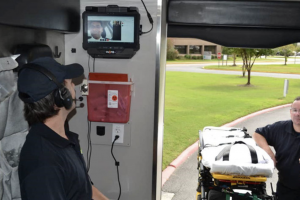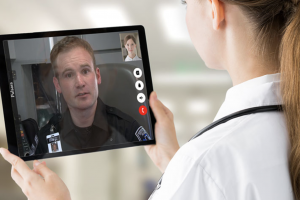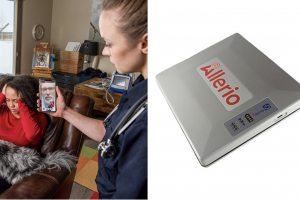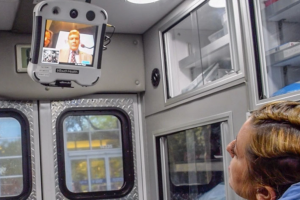
As a result of the Centers for Medicare and Medicaid Services (CMS) new Emergency Triage, Treat and Transport (ET3) program to be designed as a pilot study, the goals are to see whether the practices it encourages produce system savings safely. As you read in Part 1 of this blog, CMS has targeted larger, more urban candidates so that it would have sufficient numbers for research purposes. Further, the program has a mandatory requirement for a partnership with an alternate destination at least some of the time. If the candidate site wants to focus on treatment in place as a solution, it has to have at least one alternate destination as well, and has to put a “qualified healthcare practitioner” (i.e., doctor, physician’s assistant or nurse practitioner, but not an EMT or paramedic) on the ambulance or connect to one with a telehealth communication link.
All of these conditions make it more difficult for rural EMS providers to participate. While rurality of the 205 approved agencies hasn’t been analyzed yet, the map suggests that at least some rural sites are included. It’s important to note that rural sites will be telehealth partnerships. It is unlikely that such sites will have access to 24/7 alternate destinations or doctors on the ambulance.
Another opportunity exists for deploying and paying for community paramedicine (CP) type services. The Healthcare Common Procedure Coding System billing (HCPCS) code A0998 is used in some states to reimburse ambulance agencies for non-transport services rendered for Medicaid patients. Most states don’t use it. Some states use it for limited clinical conditions/treatments (e.g., a diabetic patient who receives dextrose and is released without transport, etc.), and in others (plus the occasional commercial third-party payer such as a health insurance company) it is used for broader CP services. At best this is currently a spotty practice across the US.
So, what are the opportunities presented by the current COVID-19 crisis? Beyond the advocacy urged by NAEMT for additional financial reimbursement to EMS agencies during the pandemic, there are momentarily opened doors for policy change to address COVID-19 that could become a permanent part of the EMS landscape, in the same manner as NG911 could be more broadly. It is obvious that bringing all patients to a hospital emergency department (ED) under the COVID-19 circumstances cannot and should not happen.
Treating patients at home, in step-down isolation centers, field “hospitals,” or otherwise outside recognized hospitals is the only logical solution. So too should the ability of EMS agencies to be paid to treat patients in these settings without transport to an ED. Finally, what has always been logical policy to EMS may now be logical to healthcare payers. Part of this treatment will be CP type services, which now have the opportunity to be recognized as legitimate services provided by EMS professionals.
In the course of authority already existing in some states or created under emergency declarations or emergency rulemaking, all of this can become a reality for at least the extent of the COVID-19 emergency. The states of Maine and Wyoming have already enabled EMS agencies to utilize the A0998 HCPS code to be used for “no transport” services rendered for COVID-19 patients. Other states are looking at this and COVID-testing for reimbursement by our practitioners.
CMS has also enacted changes to where an ambulance may transport patients and be reimbursed under its “Hospital Without Walls (Temporary Expansion Sites)” provisions:
“During the Public Health Emergency (PHE) for the COVID-19 pandemic, we are temporarily expanding the list of allowable destinations for ambulance transports. During the COVID 19 PHE, ambulance transports may include any destination that is able to provide treatment to the patient in a manner consistent with state and local Emergency Medical Services (EMS) protocols in use where the services are being furnished. These destinations may include, but are not limited to any location that is an alternative site determined to be part of a hospital, CAH or SNF, community mental health centers, federally qualified health centers (FQHCs), physician’s offices, urgent care facilities, ambulatory surgery centers (ASCs), any other location furnishing dialysis services outside of the ESRD facility, and the beneficiary’s home.”
CMS has also relaxed many of its restrictions on the use of telehealth services in order to reduce practitioner and public exposure to COVID-19. For example, Maine is exploring enabling the telehealth provisions of ET3 treatment in place for Medicaid patients in general without being a part of the ET3 approved pilot program. This would enable more rural ambulance agencies to benefit from providing CP type services routinely and during 911-initiated calls and to be reimbursed.
As the COVID-19 crisis slows, there is an opportunity in the coming months to open the types of doors described above that have been successful in some locales to fund CP type services. This will require efforts at the local, state and national levels to reinforce unanticipated levels of awareness of EMS capability and appropriate incentivizing that have been propelled to the forefront during COVID-19.
Interested to read more about this topic? Take a look at this blog on EMS Concerns for the Here and Now.
 Kevin McGinnis, MPS, Paramedic Service Chief (Ret.) has been an EMS system builder since 1974. He is the communications technology advisor for five national EMS associations, and program manager for public safety communications, rural EMS and community paramedicine for the National Association of State EMS Officials (NASEMSO).
Kevin McGinnis, MPS, Paramedic Service Chief (Ret.) has been an EMS system builder since 1974. He is the communications technology advisor for five national EMS associations, and program manager for public safety communications, rural EMS and community paramedicine for the National Association of State EMS Officials (NASEMSO).
He received undergraduate and graduate degrees from Brown University and Cornell University in health care delivery systems and hospital administration. Kevin has been a paramedic, a paramedic service chief for volunteer, private, and hospital-based services, a hospital emergency department director, and Maine’s state EMS director.
He is the past Chairman of the U.S. Department of Homeland Security’s SafeCom Program and continues to serve on its Executive Committee. Kevin is Vice-Chair of the Governing Board of the National Public Safety Telecommunications Council and was bestowed its top honor, the Richard DeMello Award, in 2017.
Kevin has been an energetic promoter of the nationwide public safety broadband network since 2006. In August, 2015, he was named by the U.S. Secretary of Commerce to a second three-year term on the First Responder Network Authority (FirstNet) Board of Directors and termed out in October, 2018. He currently serves as the NASEMSO representative to the FirstNet Public Safety Advisory Committee. In 2018, Kevin received the Journal of EMS “Top Ten Innovator Award” for his FirstNet work. He was named by the Government Technology/Solutions for State and Local Government magazine as one of its 2013 “Top 25 Doers, Dreamers & Drivers in Public-Sector Innovation”.


